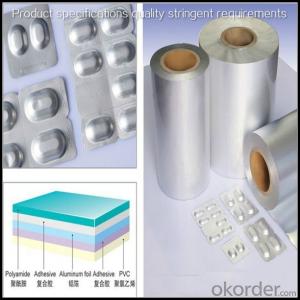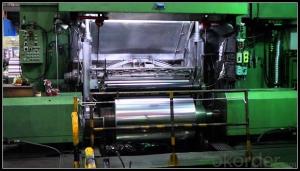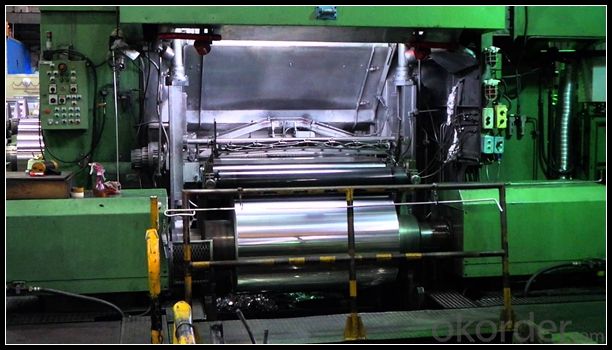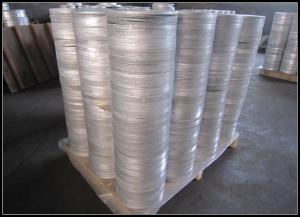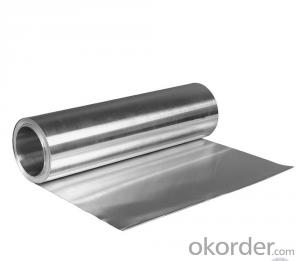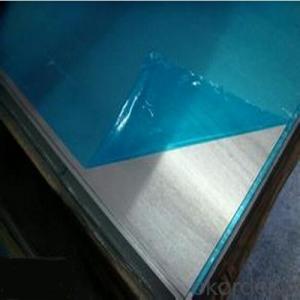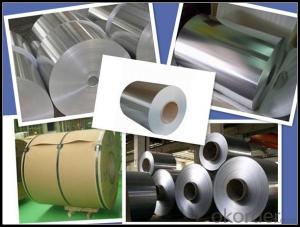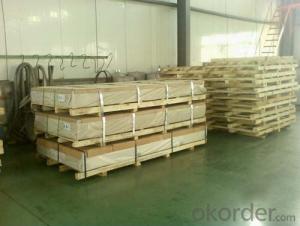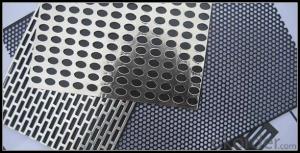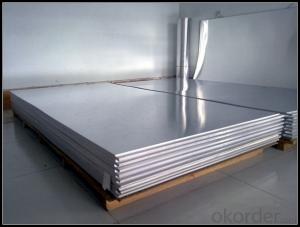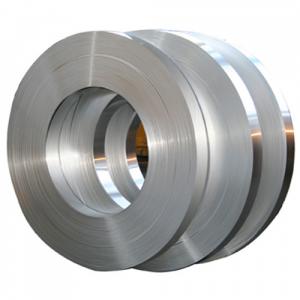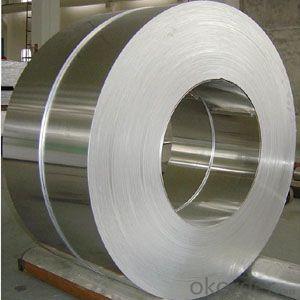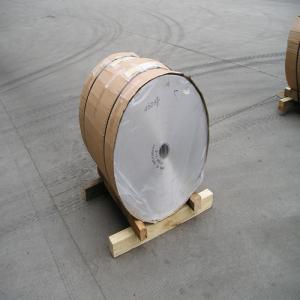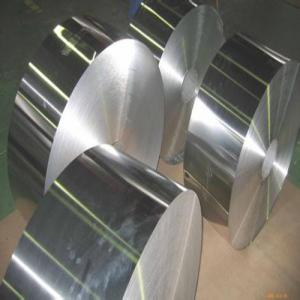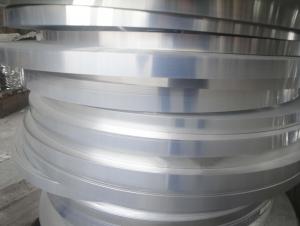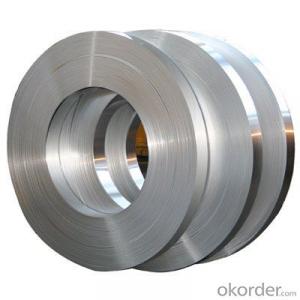Aluminum Inlay Strips for Roofing Usage Aluminum Sheet from China
- Loading Port:
- Tianjin
- Payment Terms:
- TT OR LC
- Min Order Qty:
- 1 m.t.
- Supply Capability:
- 4999 m.t./month
OKorder Service Pledge
OKorder Financial Service
You Might Also Like
Specification
1. Specification of Aluminum
1) Alloy | 1050, 1060,1100, 3003 3004 3105 3005 5005 5052 etc |
2) Temper | O/H12/H14/H1/H18/H32/H34/H36/H38//H111/H112/H116/H321/T6/T651/T3/T351 etc |
3) Thickness | 0.1mm to 6mm |
4) Width | 20mm to 3300mm |
5) Coil weight | 100kgs to 6 tons depends on actual requirement |
6) Core material | Aluminum alloy |
7) Coil Inner diameter | 76mm, 152mm,or as required |
2. Application of Aluminum
(1).Interior: wall cladding, ceilings, bathrooms, kitchens and balconies, shutters, doors...
(2).Exterior: renovations...
(3).Advertisement: display , signboards, fascia, shop fronts...
3. Feature of Aluminum
Aluminum alloys have been the primary material of choice for structural components of aircraft since about 1930. Although polymer matrix composites are being used extensively in high-performance military aircraft and are being specified for some applications in modern commercial aircraft, aluminum alloys are the overwhelming choice for the fuselage, wing, and supporting structure of commercial airliners
4. Certificate:
SGS and ROHS(if client request, paid by client), MTC(plant provided), Certificate of Origin(FORM A, FORM E, CO), Bureau Veritas and SGS (if client request, paid by client), CIQS certificate
5. Image of Aluminum
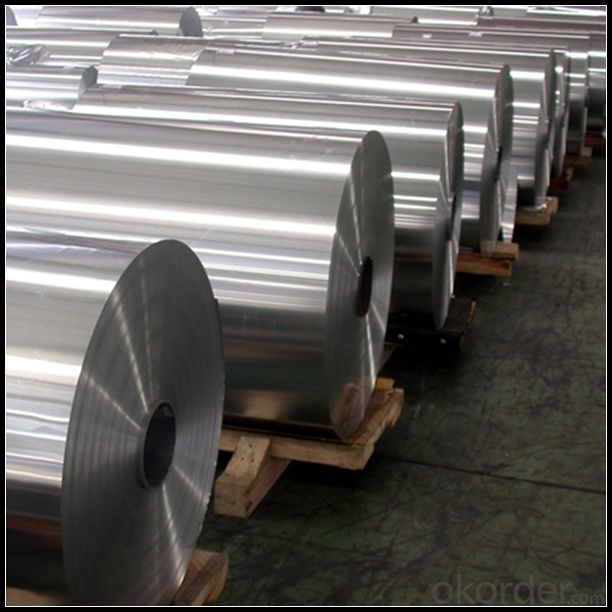
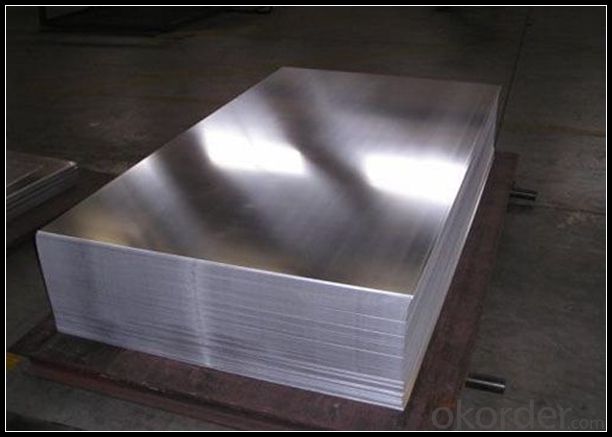
6. Our Service
1. Reply your enquiry in 24 working hours. |
2. OEM, buyer design, buyer label services provided. |
3. Exclusive and unique solution can be provide to our customer by our well traned and professional engineers and staffs. |
4. We can provide free sample for your check |
5. We have the certification of ISO 9001 |
7. FAQ
Q: What is the produce prase? | ||||
A: Normally it would be 40days after received your deposit. | ||||
Q: Can you provide free samples? | ||||
A: Yes, free samples will be sent to you on freight at destination. | ||||
Q: Can I get your latest catalogue? | ||||
A: Yes, it will be sent to you in no time. |
- Q: Is it possible to utilize aluminum strips for creating decorative patterns or designs on the exterior of buildings?
- <p>Yes, aluminum strips can be used to create patterns or designs on building exteriors. They are lightweight, durable, and resistant to corrosion, making them ideal for outdoor applications. Aluminum strips can be cut, bent, and shaped into various forms to create intricate designs and patterns. They can also be anodized or painted to achieve different colors and finishes, enhancing the aesthetic appeal of the building's exterior.</p>
- Q: This question asks for the cost involved in the production of aluminum strips.
- <p>The cost of aluminum strip production varies significantly and depends on several factors including the cost of raw materials, energy costs, labor, machinery, and market demand. Additionally, the cost can be influenced by the scale of production, efficiency of the production process, and the specific grade or alloy of aluminum used. As of 2023, the cost of aluminum on the London Metal Exchange (LME) is a key factor, as it represents the base price for aluminum. However, to get an accurate cost for aluminum strip production, one would need to consider all these variables and possibly consult with industry-specific cost analysis or directly with aluminum producers for the most current and detailed figures.</p>
- Q: Is it possible to use aluminum strips as a material for fencing?
- <p>Yes, you can use aluminum strips for fencing. Aluminum is a popular choice due to its durability, resistance to corrosion, and low maintenance requirements. It is lightweight, easy to install, and can be shaped into various designs. Aluminum fencing is also known for its strength and can be an effective barrier for security purposes. However, it may not be suitable for all environments, especially where high wind loads or heavy impacts are expected, as it can dent or bend more easily than some other materials.</p>
- Q: Is it suitable to use aluminum strips for roofing in areas with high temperatures?
- <p>Yes, aluminum strips can be used for roofing in hot climates. Aluminum is a lightweight, durable, and corrosion-resistant material that can withstand high temperatures without degrading. It reflects heat, reducing the amount of heat absorbed by the roof, which can help keep the interior of a building cooler. Additionally, aluminum's resistance to rust and corrosion makes it an ideal choice for climates with high humidity or where there is a risk of saltwater corrosion. However, it's important to ensure proper installation and ventilation to maximize its performance and longevity.</p>
- Q: This question seeks to understand the distinctions between two common metal materials: aluminum strips and steel sheets.
- <p>Aluminum strips and steel sheets differ in material composition, properties, and applications. Aluminum strips are made from aluminum, a lightweight metal known for its corrosion resistance and high thermal conductivity. They are often used in applications requiring light weight and flexibility, such as in electrical wiring or heat exchangers. Steel sheets, on the other hand, are made from steel, which is an alloy of iron and carbon. Steel is stronger and more durable than aluminum, making it suitable for construction, automotive, and heavy machinery. Steel also has higher magnetic permeability and is more resistant to wear. The choice between aluminum strips and steel sheets depends on the specific requirements of the project, such as strength, weight, and environmental conditions.</p>
- Q: What are the various classifications of aluminum strip based on their properties and applications?
- <p>Aluminum strips are classified into different grades based on their alloy composition, mechanical properties, and applications. Common grades include 1000 series (99% pure aluminum), 3000 series (aluminum-manganese alloys), 5000 series (aluminum-magnesium alloys), and 6000 series (aluminum-magnesium-silicium alloys). Each grade has specific characteristics, such as corrosion resistance, formability, and strength, making them suitable for various industries like construction, automotive, and packaging.</p>
- Q: The user is inquiring if it's possible to utilize recycled aluminum for their roofing project.
- <p>Yes, you can use recycled aluminum for your roofing project. Recycled aluminum is not only environmentally friendly but also cost-effective. It retains the same strength and durability as new aluminum, making it an excellent choice for roofing. It's lightweight, resistant to corrosion, and can be easily shaped and installed. Additionally, using recycled aluminum helps reduce waste and conserves natural resources. However, it's important to ensure that the recycled material meets quality standards and is sourced from a reputable supplier to guarantee its performance and longevity.</p>
- Q: This question asks for a comparison of the pros and cons of using aluminum strips as a material for exterior cladding on buildings.
- <p>Aluminum strips for exterior cladding offer several advantages, including their lightweight nature, which reduces structural load. They are also resistant to corrosion, making them suitable for various climates and weather conditions. The ease of installation and maintenance is another benefit, as aluminum is less prone to damage and requires minimal upkeep. Additionally, aluminum strips can be easily recycled, contributing to sustainability efforts. However, there are disadvantages such as the potential for thermal expansion, which can lead to buckling or distortion over time. Aluminum may also dent or scratch more easily than some other materials, and it can conduct heat and cold, potentially leading to energy inefficiency. Lastly, while it is cost-effective in the long run, the initial installation cost can be higher compared to some traditional materials.</p>
- Q: This question asks for a comparison of the benefits and drawbacks of using aluminum strips as a roofing material.
- <p>Aluminum strips for roofing offer several advantages, including durability, resistance to corrosion and rust, and low maintenance requirements. They are lightweight, which reduces the load on the structure, and can be easily recycled. Additionally, aluminum strips can be coated with various finishes to match architectural styles, enhancing aesthetic appeal. However, they also have some disadvantages, such as being more expensive than traditional materials like asphalt shingles. They can also be noisy during rain and hail, and may require professional installation due to their specialized nature.</p>
- Q: Explain the use of aluminum strips in the automotive industry briefly.
- <p>Aluminum strips are widely used in the automotive industry due to their lightweight, corrosion resistance, and high strength-to-weight ratio. They are commonly used in the manufacturing of car bodies, engine parts, and heat exchangers. Aluminum strips are also utilized in the production of wheels, where their lightweight nature contributes to improved fuel efficiency and performance. Additionally, they are employed in the construction of radiators, air conditioning systems, and various electrical components due to their excellent thermal conductivity and electrical properties. The use of aluminum strips in automotive applications helps reduce vehicle weight, which in turn enhances fuel economy and reduces emissions.</p>
Send your message to us
Aluminum Inlay Strips for Roofing Usage Aluminum Sheet from China
- Loading Port:
- Tianjin
- Payment Terms:
- TT OR LC
- Min Order Qty:
- 1 m.t.
- Supply Capability:
- 4999 m.t./month
OKorder Service Pledge
OKorder Financial Service
Similar products
Hot products
Hot Searches
Related keywords
